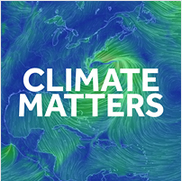Last week a group of four Republican U.S. senators — Ted Cruz, Rand Paul, James Lankford and Jim Inhofe — wrote to the inspector general of the National Science Foundation attacking its support of the Climate Matters program.
 The program offers short courses, webinars and graphical data for broadcast meteorologists to incorporate discussion of climate change when appropriate in their broadcasts.
The program offers short courses, webinars and graphical data for broadcast meteorologists to incorporate discussion of climate change when appropriate in their broadcasts.
By doing so, the program seeks to leverage the general public’s frequent and familiar contact with atmospheric science, through television weather broadcasts, as a means to contributing to public education on this important topic.
The senators argued that the foundation’s support of the Climate Matters program goes beyond its mandate to fund basic research and represents a violation of the 1939 Hatch Act, which prohibits government agencies from engaging in partisan activities.
These senators, and large numbers of their colleagues, are now many years into a relentless effort aimed at convincing the country that the carefully argued, peer reviewed scientific evidence and conclusions regarding the reality and accelerating threat of global warming is a hoax.
They have essentially encouraged the mistaken belief that the science is politically motivated and now argue that the foundation is in the business of funding “partisan” efforts in science education.
This is rather like asserting that 2+2=5, counter to the analytical conclusions reached by nearly all mathematicians, and then demanding that public funding of mathematics education and outreach be stopped on the basis that the 2+2=4 crowd is “partisan.”
The scientific consensus on climate change is not a political viewpoint — a reality perhaps best illustrated by the recent statements of the new NASA Administrator James Bridenstine, formerly a congressman from Oklahoma and climate change skeptic.
Only a month into his new job, when asked about his stance on the issue, he said, “I … know that the climate is changing. I also know that we human beings are contributing to it in a major way. … We’re putting (CO2) into the atmosphere in volumes that we haven’t seen, and that greenhouse gas is warming the planet.”

